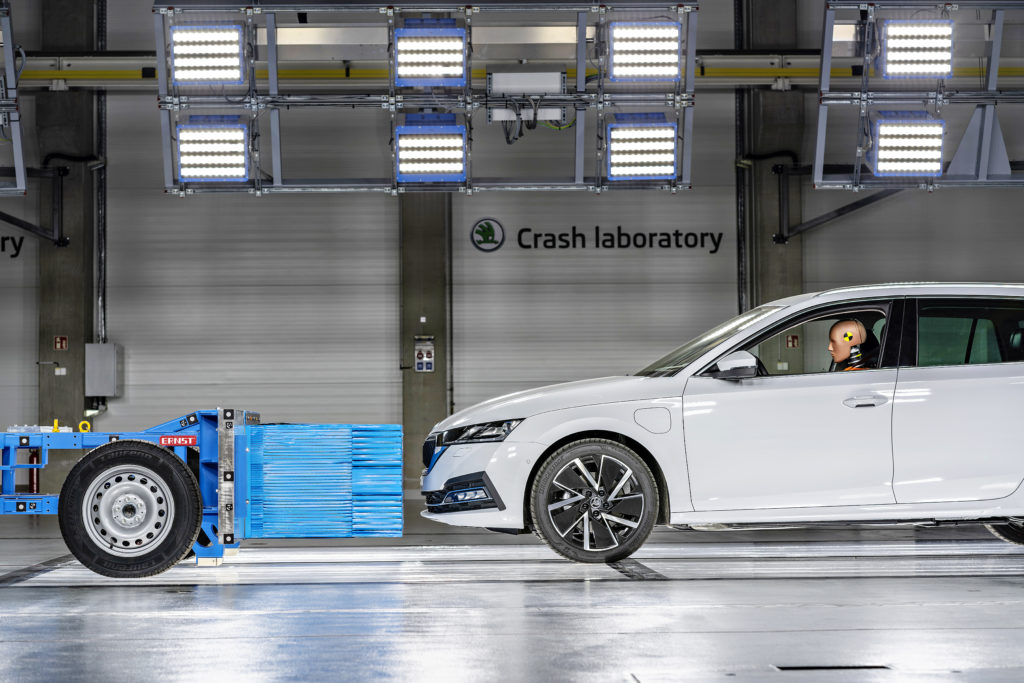Škoda Auto has established a new crash lab at its Polygon site in Úhelnice near Mladá Boleslav where the automotive manufacturer will evaluate the passive safety of next-gen vehicles in the Škoda brand and other VW group products.
The facility is specially designed for testing according to new Euro NCAP standards introduced in 2020 and also incorporates a separate area for undertaking electric car analysis; crash test capacity is being increased to meet the demand for these vehicles and will be gradually expanded over the coming years.
It is outfitted with LED light systems that produce 100,000 lux, enabling a power saving of 40% compared with the old systems, and which have a high level of thermal stability. The latest camera technology has also been chosen for the new site, including 20 static and 30 onboard high-speed HD cameras.
The lab is more than twice the size of the previous test center. The crash test hall itself is 180m (590ft) long. At the heart is an electric drive system that accelerates two vehicles weighing up to 3.5 tons to a top speed of 65km/h (40mph), or one weighing up to 3.5 tons to a top speed of 120km/h (75mph) over the entire length of the track.
Other testing equipment includes an ultra-modern flying floor test sled, which accelerates cars for the side pole-impact test. Another piece of testing equipment is the static rollover simulator. Barriers for offset frontal impact, what is known as the small overlap test, and a barrier vehicle for the rear-impact, as well as car-to-car tests compliant with the new Euro NCAP requirements cover all current test scenarios. A load-cell wall measures the forces during impact.
In the separate EV test hall, Škoda Auto has installed special water sprinkler technology to put out fires in the event of an incident due to damaged batteries following a crash test.
The majority of test data is already collected on tablets, however new tools will enable data to be recorded and processed digitally.
There are nine adult crash test dummies and four child dummies. These are positioned in the a car before a test using an optical device, which relies on static photogrammetry to check that they are seated correctly.
Christian Strube, Škoda Auto board member for technical development, explained, “Our new crash lab enables us to simulate potential accidents even more comprehensively and realistically, thus creating an important technical prerequisite for further improving our cars’ high level of safety in future. What’s more, the facility also meets all of the technical requirements for tests involving electric vehicles.
“We will continue to gradually increase the capacity for crash tests in years to come. By opening our new crash lab, we are once again taking on a little more responsibility within Volkswagen Group,” Strube added.


